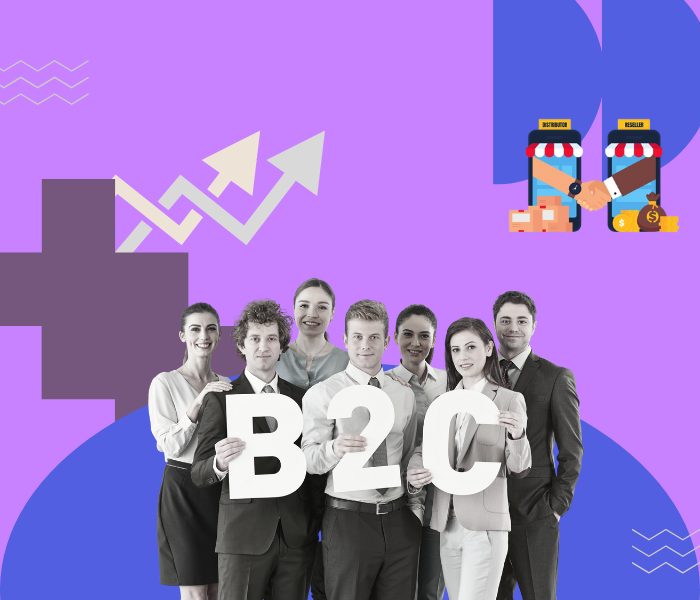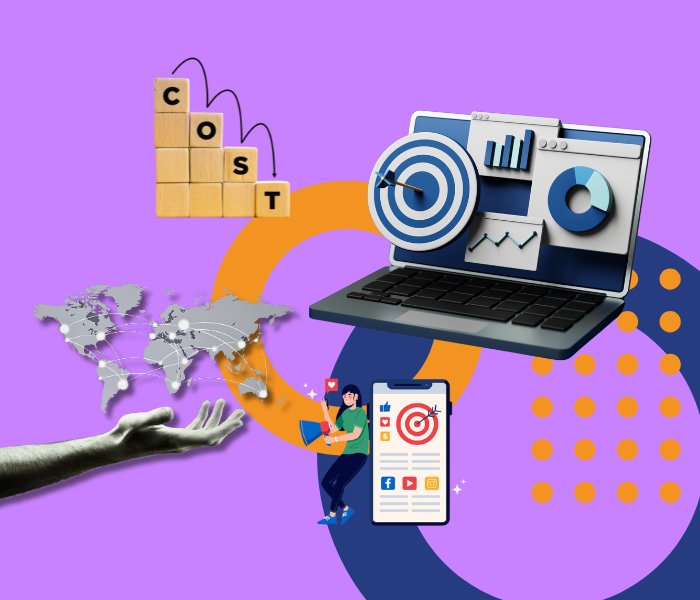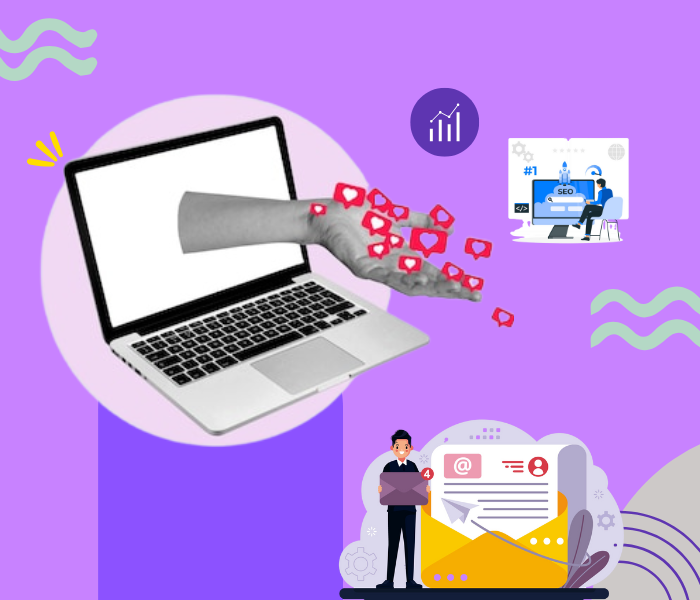6 Dec 2024 |
By - Sudha Mariappan

Did you know?
E-commerce sales worldwide are forecasted to reach an astronomical $6.3 trillion in 2024.
Nearly 20% of the global retail sales now come from online shopping.
Over 2.14 billion people worldwide are buying goods and services online, making it all more accessible and competitive than ever.
If you have ever wanted to set up your own e-commerce business, now is the perfect opportunity.
What is E-commerce?
E-commerce, short for electronic commerce, describes the sale of goods and services through the Internet. Therefore, this contains a wide spectrum of business models that range from retailing, e-marketplaces both for tangible and intangible products, or business-to-business trading.
E-commerce has become an essential part of the new economy, allowing companies to have access to an audience that is split across many regions but can still operate without being limited to having a physical shopfront.
E-commerce, though not something new, is gaining momentum very rapidly within the last two decades or so. Owing to technological advancements, more businesses and even consumers are conducting transactions online than ever before.
With online book purchasing, online streaming service subscriptions, or the purchase of groceries, consumers are increasingly becoming accustomed to the daily reality.
There are various categories of e-commerce, some of which include:

- Business-to-Consumer (B2C): The most widely known e-commerce is B2C because it sells products or services to the final consumers. Some instances are Amazon, Flipkart, and Myntra.
- Business-to-Business (B2B): In this model, it sells products or services to other businesses. One of the best examples of a B2B platform is Alibaba.
- Consumer-to-Consumer (C2C): Platforms like eBay and OLX allow individuals to buy and sell their products directly to each other.
- Consumer-to-Business (C2B): In this structure, individuals sell products or offer services to businesses. Examples include freelancers who offer their skills to businesses on Fiverr or Upwork.
Read Also:
Free Guide to Generate Leads for Your B2B Business
How E-commerce Has Revolutionized Online Business
E-commerce has completely revolutionized business, changing the way businesses conduct themselves and the manner through which their customers relate to them. This digital storm has brought about benefits that were impossible in a traditional retail store setup.

1. Global Reach

Geographical barriers are completely removed in e-commerce. In a traditional brick-and-mortar business, the existence of such businesses depends on the place and people around them, and they can only cater to the local customers nearby.
However, electronic commerce helps expand the marketplace of even the smallest companies to benefit all over the world, making it a well-measured boon for business.
For example, an Indian SME can sell their product or market it to people in the United States, the United Kingdom, or Australia even without being there. Amazon, eBay, and Alibaba have become hubs that not only provide global trade opportunities but also connect businesses of any size with international buyers.
Global reach has opened markets and further increased competition, forcing businesses to innovate and improve day by day.
2. Round-the-clock Accessibility
The second significant influence e-commerce has brought about is the round-the-clock accessibility of online stores. While the physical store has certain hours of operation, e-commerce websites are available 24/7, 365 days a year.
This continuity allows shoppers to shop around 24/7 and therefore provides wider accessibility to customers who get to shop irrespective of the time of day it is or the working hours in their place of residence.
This flexibility has greatly enhanced the experience of customers in different ways since they can browse and compare products as well as purchase them irrespective of the hours during which the shops open. Similarly, businesses stand to gain many sales opportunities since the products are offered for sale around the clock.
For example, it has enabled customers to place orders during weekends or holidays when most physical shops are usually closed. This makes it possible for businesses to make sales even when the shops are not open.
3. Low Operations Cost
E-commerce has been in a position to significantly reduce the cost of operations for the running of a business. Physical stores have all the high costs of real estate, designing of the interior, employees, and maintenance, among others, not to forget the utilities and security costs.
E-commerce, on the other hand, can be run with lower overhead costs. Businesses don't need to rent a physical space or more employees to run their operations.
Besides, the e-commerce platforms allow for automatic processes that would further reduce costs. An example of such operations is an application that might automatically manage the inventory, process orders, and provide customer support, thus making businesses operate more effectively with fewer resources.
As a result, this cut on operational costs can be passed on to lower prices of products for consumers, still keeping business profitable.
4. Data-Driven Insights
One of the greatest benefits that e-commerce offers is the availability of data and analytics. E-commerce captures huge amounts of data about customer behaviour, including but not limited to purchasing habits, browsing patterns, product preferences, and demographics.
Such high volumes of information do allow businesses to make data-driven decisions, providing them with understanding of their target audience and ways through which they can improve their products, marketing strategies, and marketing services in accordance with the expectations of the target market.
For example, companies can use customer data to design targeted shopping experiences, like the products purchased by the customer in the past or discounts customized according to different segments of customers.
Data insights also help firms forecast trends and optimize their supply chain while customizing their pricing strategy. Business firms, through real-time insights of customer behaviour, will have strategic advantages over competitors that would help in making timely changes in market dynamics.
5. Personalized Marketing
E-commerce revolutionizes marketing through its ability to offer highly specific and targeted marketing campaigns. Traditional marketing tools, for example, include billboards and television advertising, which target a wide reach but often are irrelevant to everyone.
An e-commerce platform will, therefore, provide tools such as social media advertising, email marketing, and search engine optimization where businesses would be targeting specific groups based on behaviour, interests, or demographics.
Personalized marketing allows companies to send individualized messages, which really seem to resonate with the customer more effectively. In other words, an online clothing retailer might suggest similar items that a particular customer has purchased in the past, or a beauty brand might send emails for promotions with specific products relevant to a customer's skincare routine.
In this regard, personalized messages increase customer levels of engagement and conversion rates since they will probably act on those things that align better with their needs and interests.
There is no doubt that personalized marketing will also improve customer loyalty. It is because all the information and offers provided will help create a connection among the customers, which will make them come back as a returning customer and a loyal one for the long term.
Launching Your E-commerce Venture
Launching an e-commerce business can be exhilarating, but it also involves some careful planning and execution. To set up a roaring online shop, you must consider several key aspects, beginning from finding a lucrative niche and sourcing high-quality products to designing your dream website.
Here are some things to keep you on course as you launch your e-commerce venture:
Find Your Niche
The first step in the process of forming a successful e-commerce business is choosing a niche. A niche will be a specialised segment of the market that you target with your products or services. The ability to find the right niche becomes very important because it defines your brand identity and shapes your marketing strategy.
Here are tips on how to find your niche:
Identify hot products in the market through Google Trends, Amazon Bestsellers, and other social media platforms. Attempt to identify which gap is most competitive and less competitive but still has high demand.
- Identify Your Passion: Running an e-commerce business is indeed a long-term commitment. Be very selective when you are choosing a niche. Being keen on what you sell is very encouraging and will help you maintain the energy in the early stages.
- Understanding Your Target Audience: Determine and break down the demographics, interests, and pain points of your target customers to know well what products best cater to their specific needs and preferences.
- Assess Profitability: Some niches are a lot more profitable than others. Calculate any likely profit margins before you make a final decision to determine potential product cost and shipping costs as well as pricing strategies. Any products with low-profit margins often require higher sales volumes to be considered viable.
- Test Your Idea: First, you may consider testing the idea itself by running some small campaigns. These can be a limited-time social media ad, or selling just a few items on a marketplace, such as Etsy or Amazon, to test interest in your products.
Read Also:
What is Video Marketing? 7 Benefits of Video Marketing
Sourcing Your Products
Now that you have identified your niche, sourcing your products is the next logical step. Here are several ways by which you can source products for your e-commerce store:
- Manufacturing: If anyone has the technical know-how and resources in place, they can manufacture their own products. The advantage is absolute control over the quality of the product, pricing, and identity of the brand. On the other hand, manufacturing is a capital-intensive process in terms of materials, production facilities, and labour.
- Wholesalers: An e-commerce business buys goods from wholesalers. You can purchase merchandise in bulk at a lower price from wholesalers and sell for a profit on your online store. Wholesale suppliers can be found using websites such as Alibaba and IndiaMART.
- Dropshipping: This is probably one of the most used business models by new e-commerce entrepreneurs. This model never requires one to keep a stock inventory. Once a customer places an order, you will order from a third-party supplier who will ship directly to the customer. So, there's no initial investment in buying or managing the inventory, but less control over product quality and shipping times.
- Print-on-demand service: Using print-on-demand services like Printify is great when selling personalized printed products. It offers services for creating designs and printing them onto various products such as t-shirts, mugs, and phone cases. You print it for an order and then ship the product directly to the customer.
- Local vendors: It is also common to source from local vendors, especially if you want to carry local-owned businesses or unique items not otherwise available in the area. This can become a good tool for differentiating your store from others and building a niche market.
E-commerce entrepreneurs source their products from third-party marketplaces, like eBay or Amazon. They then sell that same product to others at a higher price. Niche markets can be quite profitable, but this business strategy carries high risks associated with competition as well as the availability of the product.
Marketing Your Online Store

Marketing is one of the most essential functions for any e-commerce business to grow. To compete with others and attract a higher number of clients, your online store needs to be well-balanced with a strategic digital marketing campaign. Here are some of the most effective marketing tactics for growing an online store:
1. Search Engine Optimization (SEO)
SEO is one of the most effective tools to attract natural customers to your store online. With optimized web page performance on search engines, you are more likely to feature in the list of results when customers are searching for something similar to your product.
Focus on the use of the right words or phrases in your description and content in order to optimize your site further for Google rankings and other search engines.
For example, if you are selling eco-friendly home-related products then your target keywords could be words like "eco-friendly kitchen items" or "sustainable home products."
Creating blog content that teaches your target market about different subjects concerning the products can also boost your SEO efforts and give an image to your brand about a leader in your niche.
Read Also: What is SEO? Check out these valuable SEO Tips for Beginners
2. Social Media Marketing

Using social media can prove to be a great way to promote your e-commerce business and have better communication with potential customers. There are sites, such as Instagram, Facebook, and Pinterest, which give an opportunity to visually represent the products, communicate with customers, and build community around the brand.
If your store regularly posts high-quality content, participates in communication with followers, and runs a paid advertising campaign, it will always increase the visibility of your brand.
For example, Instagram provides an opportunity to tag products directly in the posts, so shoppers can purchase products on the same platform. Running contests, exclusive discounts, or influencer collaborations are just some other ways to expand your reach through social media.
3. Email Marketing
Another low-cost way to foster relationships with your existing customers and get the same customers to reorder is via email marketing. It can prompt the subscribers to make purchases by suggesting a couple of products on your mailing list or enabling them to know when newer products are available.
Automated email campaigns such as abandoned cart emails, as well as follow-up emails post a sale, can aid in salvaging some of the lost sales and keep the customer engaged with your brand.
You can segment your email list to be in accordance with what kind of behavior your customers make, and that could be past purchase behavior or even browsing history. That way, you can deliver more relevant and targeted content, raising the chances of conversion.
4. PPC Advertising
Google Ads or Facebook Ads support PPC ads targeting demographics and bringing targeted traffic to the website. You only pay for a click-through by a user on your ad in PPC, that's why it's one of the less costly methods of attracting potential customers to your company. You can show your product to users searching actively through product display ads or shopping ads among other formats.
Therefore, PPC ads must always be monitored and optimized, so that they help get the right kind of audience that can bring in a positive return on investment.
Read Also:What is PPC Advertising?
Conclusion
Creating and developing an e-commerce business is an amazing experience that calls for planning, continuous learning, and adaptation to fluctuating market trends. With proper marketing strategies, tools, and resources, combined with concern for customer satisfaction, you will be preparing your online store for success.
All you need to do is make up your mind, take the leap through some of these growth strategies, and watch your business grow. Connect with us at info@ontogendigital.com. Subscribe to us for more blogs.
KEY TAKEAWAYS:
- E-commerce offers global reach, breaking geographical barriers for businesses.
- It provides 24/7 accessibility, enhancing customer convenience and sales opportunities.
- E-commerce reduces operational costs compared to traditional businesses.
- Data-driven insights allow for targeted marketing and improved decision-making.
- Personalized marketing boosts customer engagement, conversion rates, and loyalty.
FAQs
1. Can I start an e-commerce business with a small budget?
Yes, you can start with a small budget by using dropshipping, print-on-demand services, or low-cost platforms.
2. How profitable can an e-commerce business be?
Profitability depends on the niche, pricing, and marketing strategies, but it can be very lucrative with the right approach.
3. What are the biggest challenges of starting an e-commerce business in India?
Some major challenges include finding reliable suppliers, navigating logistics, and handling customer expectations.
4. How can I find reliable suppliers in India?
You can find reliable suppliers through platforms like IndiaMART, Alibaba, or by partnering with local wholesalers.
5. How can Ontogen Digital help me launch my e-commerce business?
Ontogen Digital can assist with website design, digital marketing, SEO, and personalized strategies to help you succeed online.